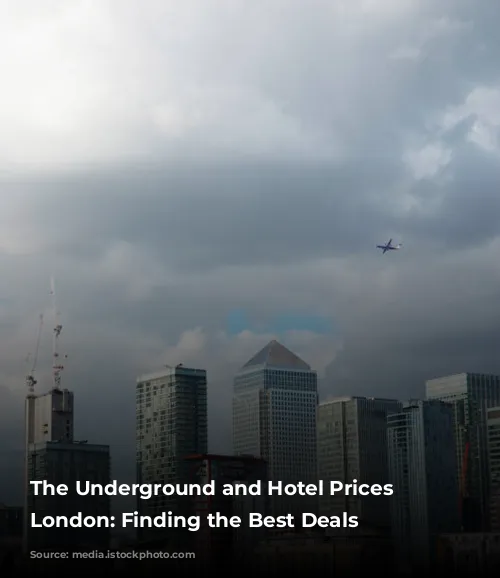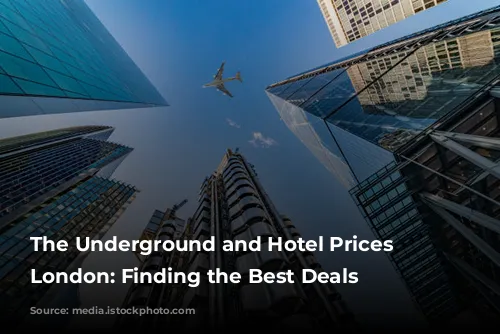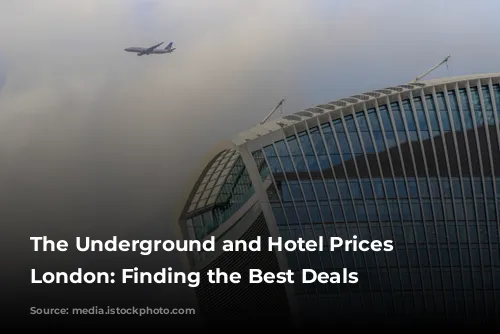London’s vibrant business landscape thrives on the ease of travel provided by its iconic underground network. With the expansion of the Tube, reaching various parts of the city has become a breeze, contributing to a flourishing hospitality industry. London boasts over 140,000 hotel rooms, catering to a vast influx of visitors and business travelers.
As London’s transportation system continues to improve accessibility and capacity, let’s explore how hotel prices differ across the main Tube lines. Travel managers and procurement teams constantly seek ways to minimize travel expenses. We aim to understand the price disparity between Zone 1 hotels and those in other districts, identifying potential savings for budget-conscious travelers.

Unveiling the Price Trends Across London’s Underground
While Zone 1 offers a central location, surprisingly, it’s not necessarily the most expensive. In fact, Zone 2 often presents average room rates that are up to 14% lower. This saving varies across Zone 2, with some lines, like the Piccadilly Line, providing potential savings of up to 36%, while others, like the Circle Line, offer a much smaller price difference, with just 5% savings in some instances.
As you move further from the city center, prices naturally decrease. Zone 3 hotels are 19% cheaper than Zone 2, Zone 4 rates are 14% lower than Zone 3, and so on. Unsurprisingly, the most significant discounts are found in Zone 6, with prices exceeding 140% lower compared to Zone 1.
Looking at individual lines reveals fascinating insights. The Bakerloo, Jubilee, and Waterloo & City lines are known for their high average room rates. Conversely, hotels along the Central Line, DLR (Docklands Light Railway), and Piccadilly Line tend to be the most budget-friendly options. This information is valuable for budget-conscious travelers looking for affordable accommodation without sacrificing convenience.

Exploring Specific Tube Lines and Pricing Patterns
Analyzing room booking data indicates that the Circle and District, Hammersmith & City, Central, and Piccadilly lines attract the highest concentration of bookings. Within the Circle and District lines, prime locations include St. James’s Park, a short distance from Buckingham Palace and the Houses of Parliament, as well as City of London stations like Farringdon, Moorgate, Embankment, and Mansion House. These central locations command premium pricing due to their close proximity to major attractions and business centers.
Surprisingly, staying close to major railway hubs like Euston, King’s Cross, and Victoria can be more affordable. Hotel rates in these areas can be up to 50% lower compared to those in the City of London. This trend is evident in the high booking volume at Euston Square on the Circle Line, indicating that many organizations recognize the potential savings. For travelers willing to commute a few extra stops, Bayswater, Notting Hill Gate, and High Street Kensington on the Circle Line offer cost-effective options, with average room rates ranging from £120 to £130 for a standard property.
Greater discounts await those seeking accommodation on the outer stretches of the District Line, where prices range from £65 to £100 per night. A similar pattern emerges on the Hammersmith & City Line, with City hotels being up to 39% more expensive than those near mainline transport hubs and up to 63% more expensive than properties in the outer suburbs of Zones 3 and 4.
On the Central Line, Marble Arch is a popular hotspot, accounting for 7% of hotel bookings in London this year. However, average room rates at £140 reflect the high concentration of properties and competition in the area. The best bargains on the Central Line are found in Zone 3, where budget accommodation can be found for as low as £79 a night.

Hotel Star Ratings and Pricing Variations
London offers a wide variety of hotel properties and chains, with pricing varying significantly based on star ratings. Two- or three-star properties along the main underground lines generally cost between £105 and £130, while four-star hotels range from £120 to £170, depending on location and proximity to transport hubs. Choosing the right hotel category based on budget and travel needs is key for maximizing value for money.

Future Trends in London’s Hotel Market
London’s hotel market continues to grow, with overall room capacity projected to increase by 12% over the next three years, surpassing 150,000 rooms by 2018. This expansion is fueled by numerous new hotel openings and extensions, adding approximately 7,000 new rooms to London’s hospitality landscape this year alone.
As new hotels emerge, understanding their locations and proximity to existing commuter routes can open up exciting opportunities for accommodation sourcing and negotiation. By staying informed about new properties and market trends, travelers can secure the best deals and optimize their accommodation arrangements.

Essential Tips for Hotel Booking Success
When negotiating your accommodation and meeting arrangements for 2017, meticulous planning is crucial. Leveraging average room rate analysis for key London Underground hubs, combined with average Tube, train, and taxi costs, provides a comprehensive understanding of the total travel expenses associated with your program. This analysis helps identify existing travel patterns and uncovers potential savings opportunities, enabling smart adjustments to office and event locations for improved commuter lifestyles and cost-effective travel arrangements.









